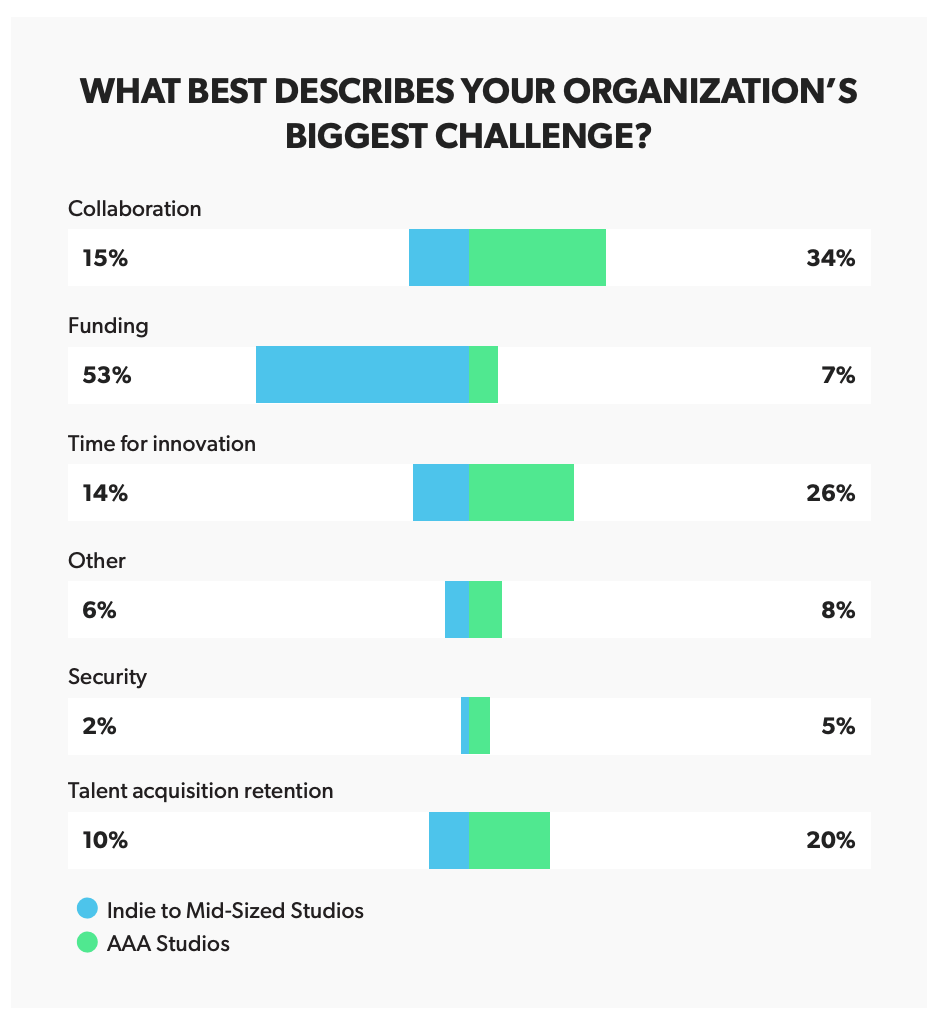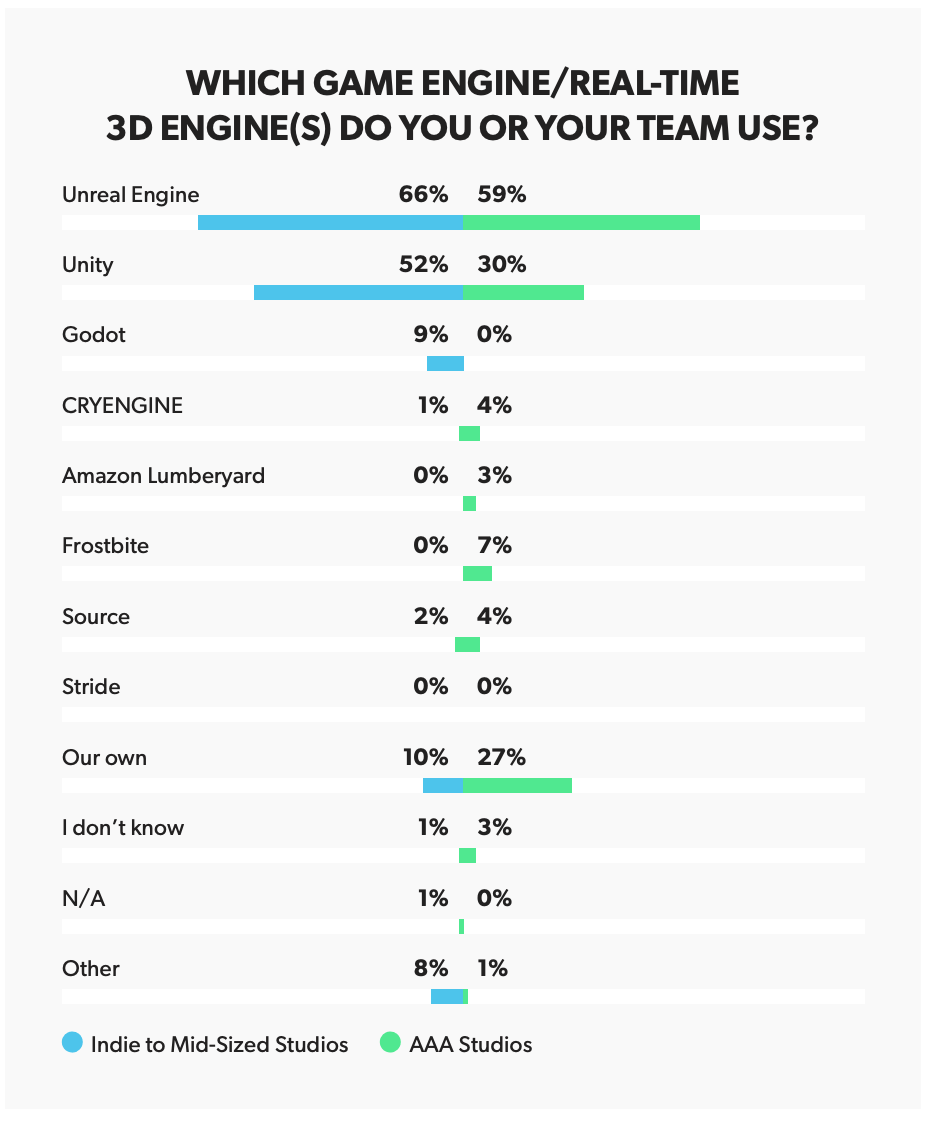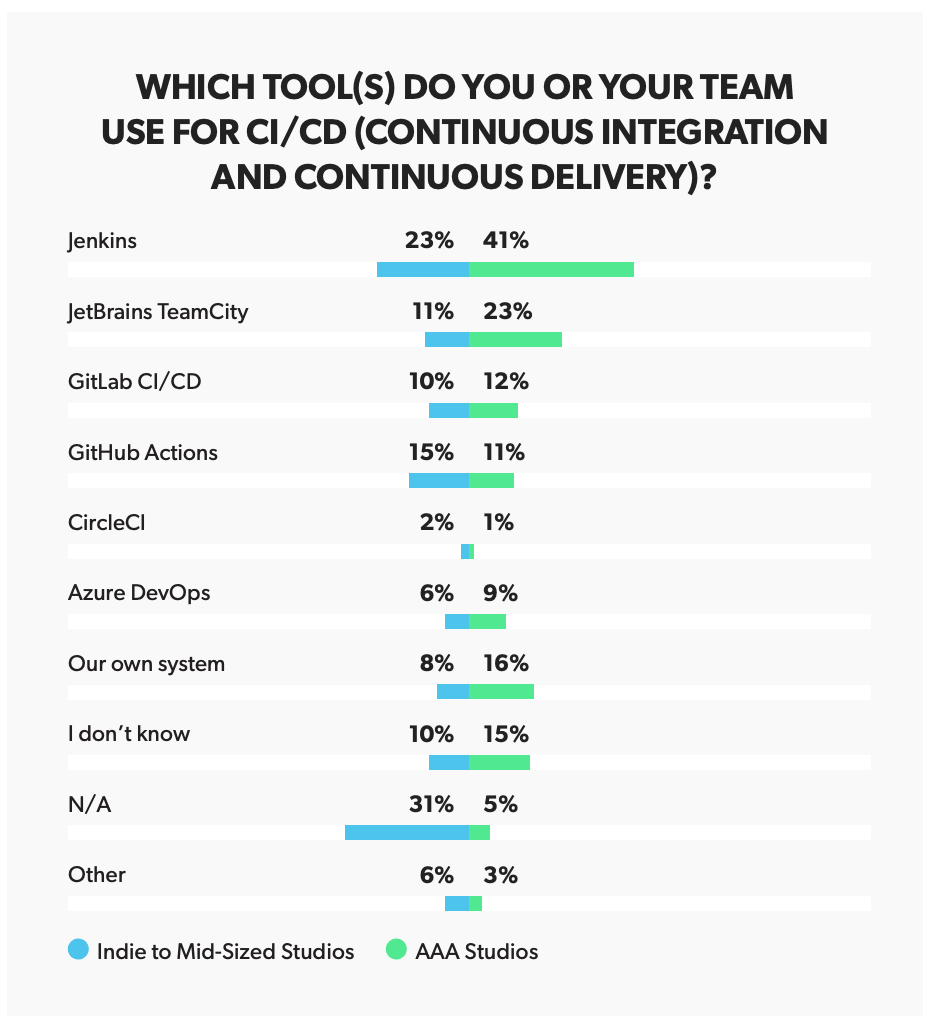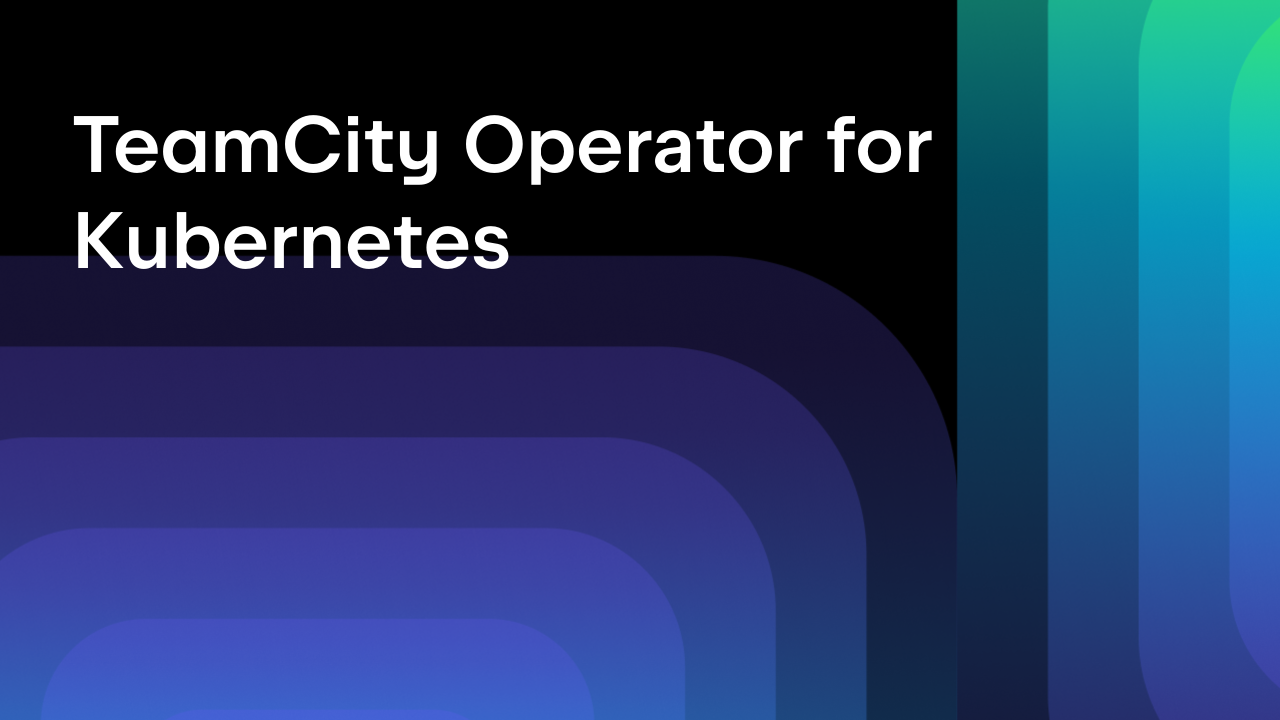TeamCity
Powerful CI/CD for DevOps-centric teams
What We Learned From the Perforce 2024 State of Game Technology Report
The gaming industry has long been a hotbed of innovation, with developers consistently pushing the boundaries of what’s possible. But as we progress into 2024, it’s clear that game technology’s sphere of influence is expanding far beyond the realm of gaming.
Technological advancements coming out of the game industry are quickly adopted by various other industries, from automotive to healthcare to education, as identified by Perforce’s 2024 State of Game Technology.
In this blog post, we’ll take a closer look at the report’s key findings and the trends that are shaping the future of game technology. We’ll also highlight some of the findings we found the most interesting.
You can download the full report via the link below to get more information on the challenges the game industry is facing, the latest AI trends, the current state of the job market, and predictions for the future of the industry.
Download your report copy here
Key findings and trends
Widespread adoption across industries sphere
The most striking trend in this year’s report is the widespread adoption of game technology across multiple sectors. Traditionally confined to gaming, tools like game engines are now being embraced by industries including media, automotive, and healthcare.
The report reveals that 50% of respondents are now using game engines outside of gaming, marking a significant shift in how these tools are perceived and utilized.
The main reason behind this trend is the growing complexity of projects. Projects are becoming more complex as the demand for high-quality, immersive experiences grows.
Economic uncertainty has added to this challenge, forcing teams to handle changing consumer demands, higher costs, and the pressure to deliver realistic visuals. The report highlights just how difficult it is to manage such large projects, especially with limited resources and teams distributed across different locations.
Collaboration challenges
Despite promising technological advancements in technology, collaboration remains a significant hurdle. The report identifies moving large files as the main barrier to effective teamwork, a challenge exacerbated by the growing size of digital assets.
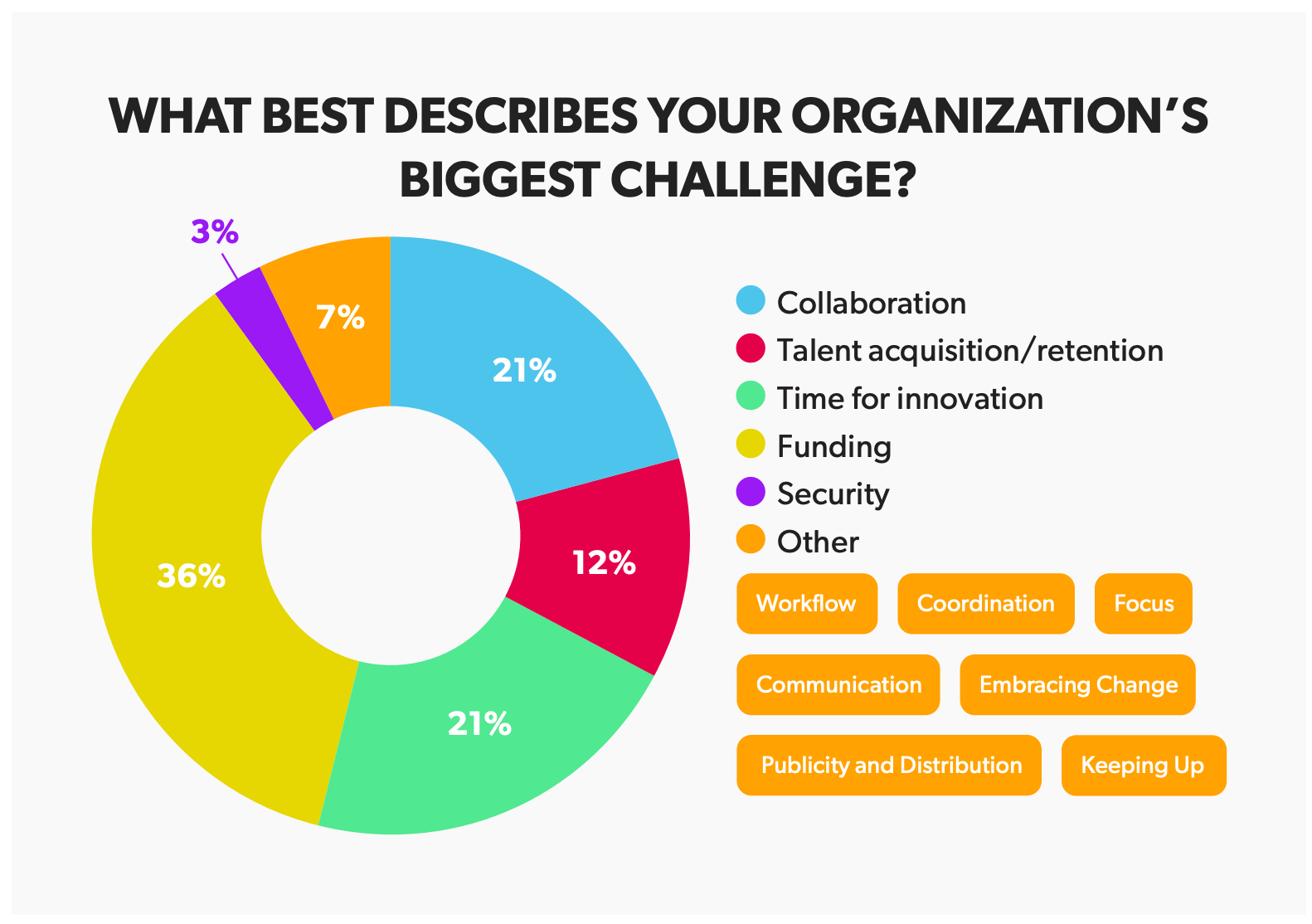
While issues surrounding remote work have become more manageable, other collaboration issues, such as inefficient communication and feedback loops, continue to impede progress.
Unsurprisingly, smaller studios and AAA studios face different challenges. Large and AAA studios primarily struggle with collaboration issues and finding time dedicated to innovation. On the other hand, small studios find funding to be their biggest hurdle, far outweighing other concerns.
Consolidation of toolsets
Efficiency is becoming more critical as organizations look to streamline their processes. Instead of adopting a wide array of tools, teams are focusing on consolidating their technology stacks. Game engines are particularly valued for their versatility, with applications ranging from digital twins in manufacturing to immersive educational tools.
Cross-industry trends in game development
The cross-industry trends regarding game technology, as highlighted in the report, include several key insights.
Adoption of game engines
Unreal Engine is by far the most utilized game engine industry-wide, with 63% of respondents using it. The engine is especially favored in media and entertainment due to its robust tools for creating 3D worlds and its flexibility in various production roles.
Just as AAA and indie studios face different challenges, they also prefer using different game engines. Thus, AAA developers often use proprietary game engines but predominantly rely on Unreal Engine, which is nearly twice as popular as Unity.
In contrast, indie studios use Unreal Engine and Unity at more similar rates, with Godot gaining popularity as an alternative.
Usage of Perforce Helix Core
The report revealed that a significant majority of respondents (54%) incorporate Git-based version control tools like GitHub, GitLab, BitBucket, or Azure DevOps into their workflows. Similarly, over half of the respondents reported using Perforce Helix Core as part of their version control processes.
Other tools used widely in the industry
In addition to game engines and version control systems, game developers continue to rely on other technologies and tools to help them create top-notch experiences for their users.
IDEs
As revealed by the report, the majority of respondents use Microsoft Visual Studio within their development process. However, more than a third of respondents (34% among AAA studios and 46% among indie studios) also reported using JetBrains Rider as their IDE of choice. This could be attributed to Rider’s seamless integration with game engines (Unreal Engine, Unity, and Godot).
CI/CD tools
The report revealed a great variety of CI/CD tools used by AAA studios and indie studios alike. Among AAA studios, Jenkins (41%) and TeamCity (23%) stand out as the most widely used CI/CD tools.
TeamCity is a powerful CI/CD tool that seamlessly integrates with Unreal Engine, Unity, and Perforce and is widely used by AAA and indie game studios. If you’d like to learn more about TeamCity, feel free to schedule a call with our solutions engineer.
Conclusion
The 2024 State of Game Technology Report paints a vivid picture of an industry at a crossroads. As game technology continues to break into new sectors, the challenges of complexity, collaboration, and innovation must be addressed to fully realize its potential.
The key for organizations across all industries will be to harness the right tools and strategies to stay competitive in an increasingly dynamic landscape.
?️Join us for a live webinar
Thursday, September 12
10:00 am PDT | 1:00 pm EDT
Join Brad Hart, CTO and VP of Product Management at Perforce – Digital Creation; Chris Perez, Director of Product Marketing at Perforce – Media and Gaming; and Anastasia Kazakova, Head of Marketing in .NET at JetBrains, for an insightful discussion on the Perforce 2024 State of Game Technology report’s key findings, including:
- The widespread adoption of game technology and generative AI across various industries.
- The workforce trends that highlight the values and skill sets prioritized by both job seekers and employers.
- The top challenges organizations face, with insights broken down by region and industry.
Don’t miss this opportunity to gain valuable insights into the rapid growth of game technology and the trends shaping the modern workforce.
Speakers
Subscribe to TeamCity Blog updates


